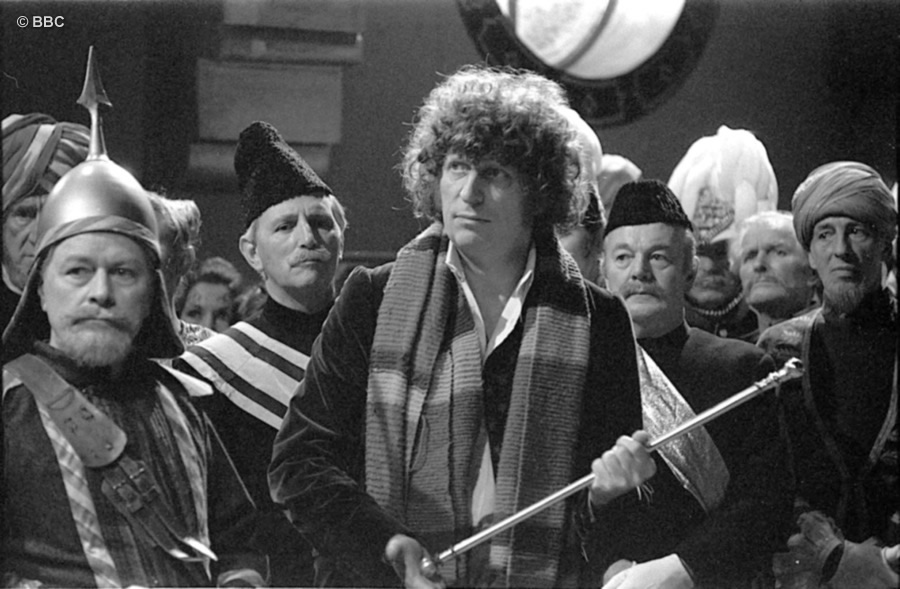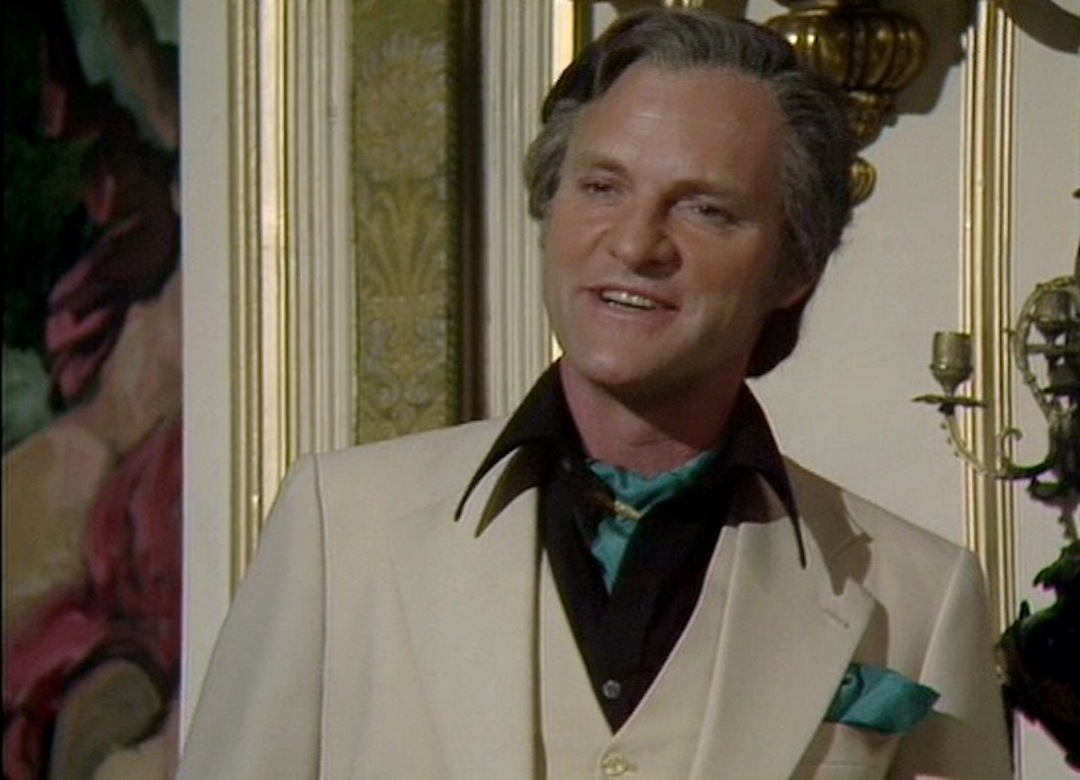Who wrote ‘City of Death’? That’s a tricky question, probably. Officially, it’s credited to the writer David Agnew – a man who doesn’t exist. So what’s the true story behind this classic Doctor Who adventure?

‘City of Death‘ had a complicated journey to the screen. It was originally pitched as a much different story by the writer David Fisher, titled ‘A Gamble with Time.’ The serial – written for the Fourth Doctor and Romana – was to be set in France in the 1920s, with the Doctor and his companion on the tail of the villainous Count Scarlioni, aided by a hardboiled detective called Pug.
Now David Fisher was no stranger to Doctor Who, and had already written ‘The Stones of Blood’ and ‘The Androids of Tara’ in the previous two seasons. When the production team asked him to pitch further ideas, he submitted two – one of which became the 1979 story ‘The Creature from the Pit,’ and the other which eventually became known as ‘City of Death.’
But how did ‘A Gamble with Time’ become the ‘City of Death’ we know today? And what does Douglas Adams have to do with it?

The answer to this lies with the budgeting. Doctor Who‘s production unit manager John Nathan-Turner (who would later become producer) realised that the team could afford an overseas shoot in Paris – provided they took a skeleton crew, and left K9 in London. The very prospect of this was enough to persuade script editor Douglas Adams and producer Graham Williams to rework Fisher’s original scripts, dropping the 1920s setting (due to the expense) and setting the story in Paris alone. This would mean abandoning Fisher’s original suggestions of Las Vegas and Monte Carlo, where the evil Scarlioni would have been rigging the casinos.
Under normal circumstances, these changes would have been made by David Fisher himself. But in the case of ‘City of Death,’ the writer was going through a divorce and was unable to carry out the rewrites. It therefore fell to Douglas Adams – together with Graham Williams – to write completely new scripts based on Fisher’s ideas. This was done incredibly quickly, with Adams effectively moving into Graham Williams’ house and working intensely his study.
But how much was changed? Fisher’s original idea had been for Count Scarlioni – the last of the Sephiroth race – to use his casino empire to fund time travel experiments that would enable him to repair his fractured body, which had been scattered throughout eternity. Scarlioni would have stolen the Mona Lisa as part of this scheme, forcing the Doctor to visit Paris in 1979, Leonardo Da Vinci in 1508, and finally a prehistoric planet Earth.

And for anyone who was seen ‘City of Death,’ many of these plot points will sound familiar. But Douglas Adams changed many of the key details. For example, the detective Pug Farquharson soon became Duggan, and the Sephiroth race was changed to the Jagaroth. Then there was Scarlioni’s lover – the Baroness Heidi – who simply became known as the Countess. Plus, of course, there was the decision to set the rest of ‘City of Death’ almost exclusively in modern day Paris, with Scarlioni’s experiments being funded entirely by the stolen Mona Lisa.
But establishing who, exactly, wrote what is a tough question to answer. Certainly, it is clear that Fisher’s original ideas had a huge influence on the final version of ‘City of Death,’ but when the writer saw the finished scripts, he didn’t think that it was fair for him to receive any credit. So how did the story come to be attributed to the mysterious David Agnew?
David Agnew, as some of you may know, was a pseudonym that was in common use at the BBC – often to shield script editors and producers who weren’t technically allowed to write for their own programmes. (“David Agnew” had also been responsible for ‘The Invasion of Time’ in 1978. He was a busy guy.) So in the case of ‘City of Death,’ David Agnew was the blanket name for David Fisher, Graham Williams and Douglas Adams.

That being said, to this day there are many people who consider ‘City of Death’ to be a classic Douglas Adams serial, and when compared to Adams’ other Doctor Who adventures such as ‘The Pirate Planet‘ and ‘Shada,’ it is easy to see the parallels; his penchant for quick-witted dialogue and dry humour is certainly evident in ‘City of Death,’ and in many ways the story typifies his trademark style.
At the same time, the Fourth Doctor Tom Baker was – for better or for worse – infamous for on-the-spot improvisation, and much of the dialogue in ‘City of Death’ was borne out of rehearsals. Indeed, one classic example is the scene in which the Doctor and Romana debate how to get down from the top of Eiffel Tower, which was reworked by the cast and crew.
But whether they would have reached this point without Douglas Adams’ input is debatable. And whether Douglas Adams would have delivered a story as good as ‘City of Death’ without David Fisher and Graham Williams is, again, debatable. So it may not be accurate to call Douglas Adams the true writer of this classic Doctor Who story – but he was undoubtedly the man who made it shine.
How do you feel about ‘City of Death’? Would you consider it to be a classic Douglas Adams tale? Let me know in the comments below.

Doctor Who scarf – order now from the Lovarzi shop!
Shop on Amazon
Latest posts…
- Doctor Who: Ranking all of the Auton stories
- 3 problems faced by Doctor Who showrunners
- Doctor Who: Ranking all of the classic Sontaran stories
- Is Doctor Who Season 13 the pinnacle of the Tom Baker era?
- Doctor Who: Is Wild Blue Yonder a modern day classic?


Leave a Reply